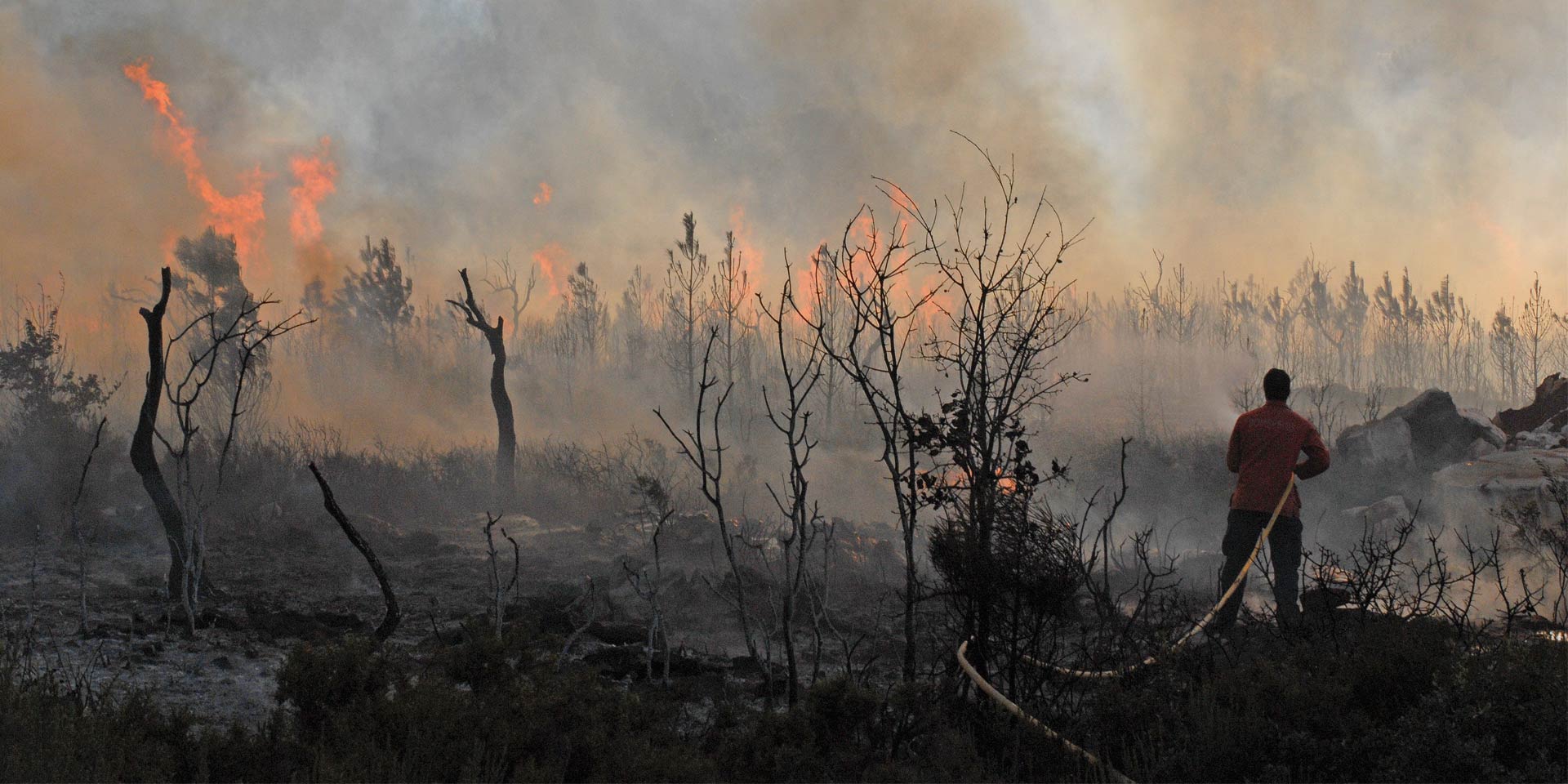Over the last 25 years, the relationship between theology and natural disasters has undergone intense scrutiny, with its consequences becoming increasingly apparent as disasters have remained a key public interest.
Zach Branham was only 24 in 2011, when he woke up to the tsunami hitting the east coast of Japan. At the time, the young American was teaching English at a school in the Kuji area.
When the offshore earthquake triggered the huge wave, Zach was in a solid building and was not in danger. However, he was unable to find out anything about his girlfriend, who lived 15 minutes away from the town where he was. With no phone or internet access, he had no choice but to set out on foot to search for her. The 15-minute journey turned into a 20-hour trek through the destruction left in the tsunami’s wake. Armed with his limited Japanese and his girlfriend’s business card, he asked about her wherever he could. He finally found her in a school; she was tearing tablecloths to cover the bodies of those who had not survived the disaster.
Twenty thousand. That was how many bodies the killer-wave left behind. The 2011 tsunami in Japan was triggered by a devastating earthquake measuring 9 on the Richter scale.
Man versus nature
Often, it seems as if humanity is competing with the forces of nature to cause damage. However, when humanity suffers at the hands of nature, a hurricane of questions arises in both the public and private spheres.
One of the first questions is, “Why have disasters multiplied to such an extent?” This question is more familiar than the answers because there are so many of them and they are so different that the only thing that is clear is that we do not have a clear picture of the situation.
According to a comprehensive report published in January 2011 by the insurance company Muenchen Rueck, over the preceding 35 years the world had experienced an average of 615 disasters annually, resulting in approximately 66,000 fatalities and $95 billion in economic losses each year. However, in 2010 alone, the Earth experienced 950 natural disasters, causing nearly 295,000 casualties and $130 billion worth of damage. The trend of disasters and costs seems to be on the rise, and some researchers are ready to confirm this. Data from 2024 indicate a marked escalation, with natural disasters causing over 74,000 deaths and total economic losses reaching approximately $417 billion, underscoring a significant upward trend in both frequency and severity over the past decade.
A 2001 report by the Worldwatch Institute (Washington, D.C.) attributed increasingly frequent natural disasters to human intervention in nature. “We have altered so many natural systems so dramatically that their ability to protect us from disturbances is greatly diminished,” said Janet Abramovitz, the report’s author, in 2001. Bear in mind that this statement was made before the Japanese tsunami, the earthquakes in Haiti and Chile, the floods in Pakistan, and the numerous other disasters that humanity has faced in the last 25 years.
In November 2014, a significant United Nations report warned that the cumulative risks of climate change are so profound that they could stall or even reverse the progress made by generations in the fight against poverty and hunger.
The report states that if greenhouse gas emissions continue to rise at the current rate, the impact on ecosystems will be irreversible. The flooding of major cities or even island nations, as well as the mass extinction of plant and animal species, are among the disasters predicted by UN experts.
The year 1989 will go down in history not only as the final chapter of communism, but also as the year when the concentration of carbon dioxide in the Earth’s atmosphere reached 350 ppm (parts per million), the maximum level required to avoid disastrous climate change consequences, according to James Hansen, a leading climate change researcher.
Nature versus man
While the consequences of global warming are generally considered predictable (and still reversible), the same cannot be said for unpredictable disasters such as earthquakes. Perhaps this is why people have striven to record any clues that might allow them to anticipate disaster and get out of its way. Some claim that the number of major earthquakes is increasing. High-profile events such as the earthquakes in Sumatra, Haiti and Chile have fuelled this view. Stephen S. Gao, a geophysicist at Missouri University of Science and Technology, says that compared to the 1970–1990 period, the Earth’s crust has become more active. The reason is still unknown, according to the researcher.
Without refuting previous information, statements by authorities in the field add to our understanding. Reports from the United States Geological Survey (USGS), along with other studies, show an upward trend in the number of reported earthquakes. However, experts are reluctant to conclude that this indicates an actual increase in seismic activity. Although it may seem that we are experiencing more earthquakes, the number of earthquakes with a magnitude of 7 or greater has actually remained generally constant. Over the past 20 years, the clear increase is actually in the number of earthquakes that we have been able to record each year. This is due to the huge increase in the number of seismograph stations worldwide, as well as improvements in global communication. In 1931, there were around 350 stations in operation worldwide, whereas today there are over 8,000 and information is received quickly from these stations via post, the internet or satellite.
In other words, gaps in historical records limit the possibility of comparing different time periods. In recent decades, not only has there been a qualitative increase in scientific recording of disasters, thanks to technological advances that have allowed for the measurement of more variables, but also a quantitative increase, because the same advances have enabled unprecedented communication between researchers and popularisation of information about natural disasters on an unprecedented scale. We might get the impression that there are more disasters because it is easier to find out about such events than in the past. However, the opposite argument also applies. Just because it was not possible to accurately monitor seismic activity in the Earth’s crust in the past does not mean we can assume that global seismic activity was comparable to today’s levels. It is more accurate to say that we cannot know for certain whether the current high number of earthquakes is unprecedented. Recognising this is crucial to making sense of seemingly contradictory reports.
Furthermore, the lack of consensus or a comprehensive overview of the number, impact, and trends of natural disasters has other causes. The Belgian organisation CRED (the Centre for Research on the Epidemiology of Disasters) highlights on its website the existence of a lack of international consensus on best practices for collecting disaster data. In addition to the complexity of collecting reliable information, a major obstacle is the huge variability in definitions, methodologies, tools and sources.
Therefore, we cannot know with certainty whether there are more disasters today than in the past. But why should we care?
Disasters as God’s messengers
In many religious traditions, disasters have, over time, been seen as a manifestation of God’s power. Some Christians believe that disasters have a punitive role; “God has punished us” is a common sentiment expressed in news reports about local disasters. However, the idea that disasters are a form of punishment is not unique to Europeans. The earthquake and tsunami that struck Japan were also interpreted as divine punishment by various people, most notably Shintaro Ishihara, the governor of Tokyo, who later apologised for blaming the earthquake on divine judgement. The controversial televangelist Pat Robertson claimed that the disaster in Haiti was caused by “the Haitians’ pact with the Devil”. When Hurricane Katrina struck, several conservative politicians said that New Orleans was being punished by God for holding gay pride parades.
Another segment of Christians believes that the power manifested in disasters has a predictive role. A survey conducted by the Public Religion Research Institute and Religion News Service in the United States found that 31% of Catholics and 34% of Protestants believe that disasters are a sign from God. This figure was nearly double among evangelical Christians. Around 67% of them said they were convinced that disasters are evidence that we are living in the final days of humanity. This belief is based on the interpretation of certain biblical passages, such as Matthew 24, which is perhaps the most representative passage linking natural disasters to the Parousia (the Second Coming of Christ), which is awaited by all Christians. “There will be famines and earthquakes in various places. All these are the beginning of birth pains” (Matthew 24:7–8).
Lost in translation?
The two aforementioned interpretations draw on episodes or passages from Scripture to lend themselves legitimacy. However, the existence of other biblical passages that highlight contrasting aspects points to the need for a more comprehensive response.
For example, chapter 5 of the Gospel of Matthew portrays God as very different from a deity who punishes unbelievers with vengeance: “He causes His sun to rise on the evil and the good, and sends rain on the righteous and the unrighteous. If you love those who love you, what reward will you get? Are not even the tax collectors doing that? And if you greet only your own people, what are you doing more than others? Do not even pagans do that? Be perfect, therefore, as your heavenly Father is perfect” (Matthew 5:45-48). Many other verses emphasise that God is patient and merciful towards the unrighteous. The love through which the Christian God reveals His personality makes it difficult to accept any association of Him with a god who strikes down His rebellious subjects.
Furthermore, when interpreting disasters as a sign of Christ’s imminent return, it should be noted that famines, diseases and earthquakes existed long before Jesus spoke to His disciples about His return. (The Bible also recounts that, during the time of the patriarch Joseph, Canaan and Egypt experienced seven consecutive years of famine. Seven years! This is almost unimaginable in today’s context.)
There is no need to exaggerate the threat of a pandemic just to identify it as an eschatological sign. Throughout history, we have read about the bubonic plague, also known as the “Black Death” which, between 1346 and 1353, killed 30–60% of Europe’s population (75–200 million people) after already ravaging the eastern regions, including Egypt. This was followed by a wave of religious fanaticism that led to the appalling persecution and extermination of entire Jewish communities: Mainz, Cologne and Strasbourg (a rehearsal for the Holocaust!). By 1350, 150 minor and 60 major Jewish communities had already been massacred. As the authorities did not understand the disease, its causes or how to treat it, people’s fears were allowed to escalate into hysteria. Someone had to pay for the plague. The Jews, Gypsies, “heretics”, and others, such as those suffering from psoriasis or acne, beggars, and other marginalised groups, were believed to be the cause of the plague (through involuntary contact, conspiracy, or magic), and so they paid the price. Seven centuries have passed since then, and the end has not come.
The wrinkles of humanity
Some theologians argue that natural phenomena should not be perceived as direct signs of Christ’s return. According to them, the only phenomenon indicated by the verses as a “sign” of the return, rather than “the beginning”, is Christ Himself coming on the clouds of heaven. So what is the point of listing disasters?
Adventist theologian Jon Paulien, who specialises in eschatological studies[1], offers a possible answer. He believes that the signs were not given to stimulate speculation about the end times. Instead, they were given to us to stimulate Bible study, to live by faith, and to remind us to be vigilant at all times. The main emphasis should not be placed on elements in the natural world, but on the spiritual dimensions of the world, says Dr Ekkehardt Mueller, an expert on the Apocalypse, in an interview published in the March 2011 print edition of the magazine Signs of the Times Romania.
No one can dispute that the signs have convinced many to take their spiritual life seriously. For these people, disasters are a more relevant argument in this respect than the unpredictability that endangers people’s lives at every moment. Calamities have made many people aware of the fragility of human life and the fact that we are far from being masters of nature and our own lives. As is often the case in God’s providence, even disasters can play a beneficial role. They can remind us that degradation is a constant in our lives, which was not part of God’s original plan for life on Earth. In this way, disasters become a means by which people learn, in one of the most difficult ways, that the time for spiritual decisions is always the present—today.



















